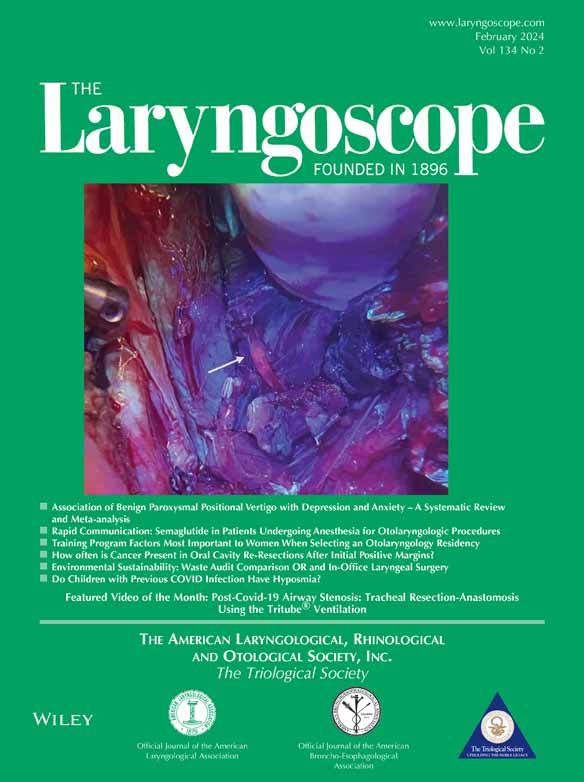Do Children with Previous COVID Infection Have Hyposmia?
The authors have no funding, financial relationships, or conflicts of interest to disclose.
This work was presented as a podium presentation at the 2023 Combined Otolaryngology Spring Meetings (COSM) in Boston, Massachusetts on May 4, 2023.
Abstract
Objective
Our goal was to see if children with a history of COVID infection had subclinical hyposmia.
Methods
Consecutive patients at a pediatric otolaryngology clinic aged 5–17 years were recruited. Demographics including gender, race, use of nasal topical medications (NTM), previous nasal surgery including adenoidectomy (NSA), and previous COVID-19 infection were collected. Each child performed a test of their sense of smell using the Pediatric Smell Wheel (PSW, Sensonics Intl, USA) under the direct supervision and scores were compared.
Results
260 children were included; mean age 10.1 years (95% CI 9.7–10.5), 128 (49.2%) female and 132 (50.8%) male. 65 (25%) used steroid nasal sprays, 100 (38.5%) had undergone adenoidectomy, and 36 (13.8%) had other nasal surgery. 120 (46.2%) had a previous COVID-19 infection. The COVID+ and COVID− groups were the same for age, gender, race, use of NTMs, and previous NSA (p > 0.05). Mean PSW score was 7.8 (95% CI 7.6–8.0), median of 8, ranging from 2 to 11. The mean PSW score was 8.0 for the COVID− group and 7.6 for the COVID+ group (p = 0.005). There was no significant difference in total PSW scores based on gender, race, use of NTMs, previous NSA. Linear regression showed previous COVID infection was significantly negatively associated with total PSW score (Beta −0.636, p = 0.006) with age significantly positively associated (Beta 0.122, p < 0.001).
Conclusion
Children with a history of COVID infection performed slightly worse when identifying odors than children without a COVID history. More study into the rates of pediatric anosmia related to COVID infection is needed.
Level of Evidence
3 Laryngoscope, 134:901–906, 2024




